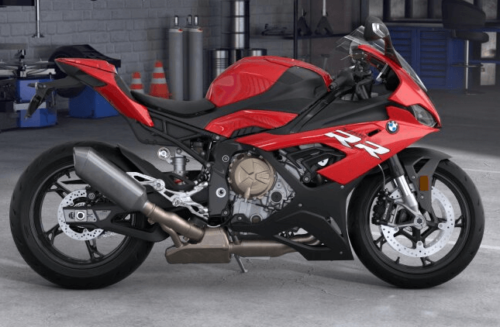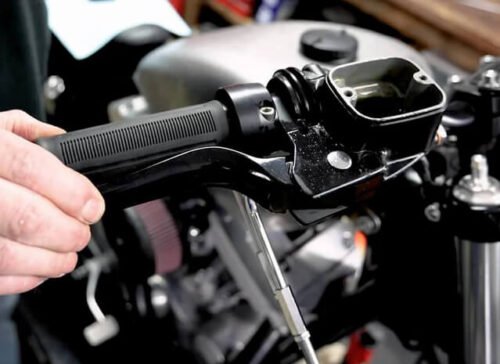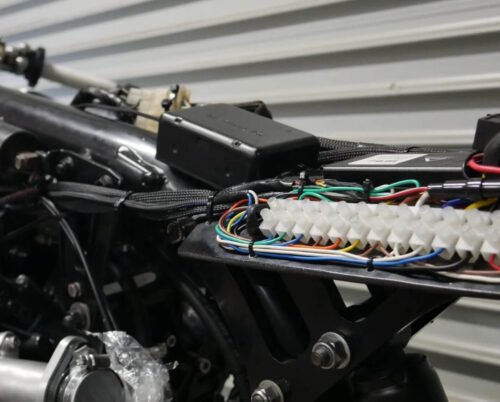Motorcycle safety relies on mirrors for riders to keep tabs on what's going on around them. Yet, not every mirror cuts it the same way. Riders have long been bickering over which is better: bar end mirrors or the stock mirrors. They argue about which (Bar End Mirrors vs Stock Mirrors) gives a better view, […]

How to choose a used motorcycle? 14 Steps Must Do
Buying a used motorcycle is often more affordable than a new one. It also allows you to find some models which might no longer be in production. So it is really a wise decision to buy a used one.
However, there are some things you should pay attention to, if you do not want to cost more to repair the motorcycle than it’s worth. In this process, careful consideration is required. With this detailed checklist, everyone can choose a used motorcycle they want.
Table of Contents
1. Define Your Purpose and Budget
The first thing you should do is to define your purpose. You should make the use of the motorcycle clear. It may include daily commutes, long road trips, off-road adventures, and occasional weekend rides. It depends on which type of motorcycle you need.
Next, you should set a realistic budget. You should not only account for the purchase price but also for costs like insurance, registration fees, maintenance, and gear.
To narrow down your options and prevent overspending, you should decide how much you’re willing to spend and stick to it
2. Research the Make and Model

research the motorcycle mode before choosing a used motorcycle
All motorcycles are created differently. Some motorcycles are known for their reliability, while others may have specific issues. Research the make and model you’re interested in is necessary. You can look for reviews, forums, and owner experiences to identify common problems or quirks.
Then you can check the availability of spare parts for older or less common models. If parts are hard to find or expensive, you may face issues down the line. Also, consider the bike’s resale value; some brands and models hold their value better than others.
TOP 10 Best Motorcycle Brands In The World
3. Ask for the Motorcycle’s History
Ask the seller about the history before you examine the motorcycle.
The most important questions to ask are:
- Tracking of Ownership: How many owners does the bike have? A single-owner bike has a higher maintenance cost.
- Accident History: Has the motorcycle ever had an accident? If yes, ask for details.
- Service History: Maintenance is an integral part of keeping a motorcycle functioning at peak performance. Seek receipts or a service history logbook.
- Reason to Sell: This can help you get a sense of what the bike is doing. When the vendor is hesitant or vague, tread carefully.
4. Inspect the Exterior Condition
You should start by inspecting the motorcycle’s overall appearance. Look for signs of wear and tear as it may indicate how well it has been cared for.

inspect the motorcycle exterior condition
Here’s what to check:
- Paint and Bodywork: Look for scratches, dents, or mismatched paint. All of these may indicate repairs after an accident.
- Rust: Inspect the frame, exhaust, and other metal parts. You should check to escape rust and corrosion.
- Leaking Fluids: It is also important to check under the motorcycle for oil, coolant, or brake fluid leaks.
- Welds and Modifications: Look for any irregular welds or poorly done modifications to escape damage or improper maintenance.
5. Check the Tires and Wheels
You can learn a lot through the condition of the tires and wheels.

check the motorcycle tire
Carefully inspect:
- Tire Wear: Make sure the even wear to escape the issues with alignment or suspension. However, you should also check the tread depth to ensure the tires aren’t too worn out.
- Tire Age: Even if the tread looks fine, old tires can become hard and brittle. Check the DOT code on the sidewall to find the manufacturing date; tires older than five years may need replacing.
- Wheels: Look for cracks, dents, or damage to the rims. Spin the wheels to ensure they rotate smoothly and don’t wobble.
6. Inspect the Chain and Sprockets

check the motorcycle chain is necessary to choose a used motorcycle
To avoid costly repairs, check the chain and sprockets carefully as they are critical for the bike’s performance.
- Chain Condition: A dry or rusty chain may indicate neglect. The chain should be well-lubricated and free of rust.
- Tension: Make sure the chain's tension is in good condition. Too tight or too loose can all cause problems.
- Sprockets: Inspect the teeth of the front and rear sprockets to check if they are evenly shaped and not excessively worn down.
7. Test the Brakes
For any motorcycle, brakes are one of the most important features of safety.

test the motorcycle brake is important for safety
Ensure they’re in good working condition is necessary:
- Brake Pads: Check the thickness of the brake pads. Too thin means they need immediate replacement.
- Rotors: Look for grooves or warping on the brake rotors to check if there is excessive wear.
- Levers and Feel: Test the brake levers for smooth operation. They should feel good instead of spongy or overly stiff.
- Brake Fluid: Inspect the fluid reservoir to make sure the fluid is clear and at the correct level.
How Often Should Change Motorcycle Brakes 2023
8. Examine the Suspension
A motorcycle’s suspension is important to its handling, comfort, and safety.
Here’s what to look for:
- Front Forks: Check if there are oil leaks around the fork seals. You can push down on the handlebars to test the suspension. If it compresses smoothly and returns to its original position without bouncing, it means the suspension has no problem
- Rear Shock: Inspect the rear suspension for leaks or damage. Sit on the bike to see if it supports your weight properly.

check the motorcycle’s suspension carefully for safe
Note: Make sure the suspension components are properly aligned and not bent or out of place.
9. Inspect the Engine
The engine is the heart of the motorcycle. To save you from costly repairs, have a thorough inspection.
Here’s what to do:
- Oil Condition: Check the oil level and color. Clean oil is a good sign, and it is better than dark or dirty oil.
- Leaks: Check if there are oil leaks around the engine.
- Exhaust Smoke: You'd better try to start the bike to observe the exhaust. Excessive white, blue, or black smoke can indicate engine problems.
- Sound: You should listen if there are unusual noises like knocking, tapping, whining, and so on. These noises could signal internal issues.
10. Test the Electrical System
The electrical system controls key functions of the motorcycle.

test the electrical system before buying a used motorcycle
Test the following:
- Battery: Ensure the battery is in good condition and holds a charge. Look for corrosion on the terminals.
- Lights: Check the headlight, taillight, brake light, and turn signals for proper operation.
- Horn: Test the horn to ensure it works.
- Starter: Start the bike multiple times to ensure the starter motor works reliably.
11. Have a Test Ride
A test ride is essential to evaluate the motorcycle’s performance.
During the ride, you also have something to pay attention to:
- Engine Performance: You need to ensure that the engine starts easily and runs smoothly. Sufficient power in all gears is also necessary.
- Clutch and Gears: You should make sure the clutch is for smooth engagement and the gears are for seamless shifting.
- Braking: Ensuring the brakes respond quickly and effectively is important.
- Handling: Check for unusual vibrations, wobbling, and difficulty in steering is necessary.
- Comfort: Make sure the motorcycle feels comfortable and suits your riding style.
12. Verify the Documents
Before finalizing the purchase, please ensure all paperwork is in order.
Check the key documents:
- Title: Never buy motorcycles with salvage titles. To avoid extra maintenance, you'd better verify that the seller has a clean title in their name
- Registration: Make sure that the motorcycle is currently registered. And there are no fees or fines.
- VIN: Cross-check the vehicle identification number (VIN) on the title and the bike itself to ensure they match.
- Bill of Sale: Get a detailed bill of sale. It includes the seller’s and buyer’s information, the date, and the purchase price.
13. Negotiate the Price
Remember, once you’ve completed your inspection, any issues you’ve found are your leverage to negotiate for a more fair price. The attitude should be polite but firm. If you think the price is too high and the seller is unwilling to budge. Don’t hesitate to walk away. There are plenty of other motorcycles available.

negotiate the price is also important for you to choose a used motorcycle
14. Plan for Immediate Maintenance
After purchasing the motorcycle, plan for some immediate maintenance tasks.
These might include:
- Replacing the oil and filters.
- Checking and adjusting the chain.
- Replacing brake pads or worn tires.
- Inspecting the battery. If necessary, please replace it
Conclusion
It can be a rewarding experience to buy a used motorcycle. To avoid some unnecessary costs, you should be patient and pay attention to detail.
I believe this detailed checklist can help you avoid potential pitfalls and find a used motorcycle that is reliable, safe, and enjoyable to ride.
Always trust your instincts—if something feels off about the bike or the seller, it’s best to look elsewhere.

Motorcycle mechanic, writer. Interested in motorcycle gear for years. Like to stay up to date with the newest products and techniques of the motorcycle.
Picking the perfect brake pads for your ride has an influence on how safe you are, how well your whip handles, and what you’ll shell out over time. You’ve got a whole menu, from wallet-easy organic pads to fancy ceramic or semi-metallic types. To get why budget brake pads ain't the same as the pricier […]
E-bikes have transformed into more than just gadgets to help you get around. Now, they're speed demons that can go toe-to-toe with motorbikes. It’s 2025, and these speedy machines have gotten a huge boost from better motors, more powerful batteries, and sleek designs that cut through the air like a knife. Let’s dive into the […]
Many riders who aren't so tall or ladies just starting to ride bikes need to pick out the best Motorcycles for Short Riders and Women. They gotta look for three key things: a seat that's not too high up, a bike that's not too heavy, and something that looks good enough to give them confidence. […]
As we accelerate into 2025, motorbikes are getting a serious tech upgrade. They’re all about safer rides and more fun on the road. Even if you’re a pro or just starting, kitting out your two-wheeler with cool tech stuff is a game-changer. Check out these ten top motorcycle gadgets each motorcyclist will want in 2025. […]
Getting around the city every day can be super annoying. You've got traffic like molasses nowhere to park, fuel prices through the roof, and buses stuffed like sardine cans make heading to the office a real pain. For loads of folks, getting a motorcycle is a pretty slick move—they’re nimble, cost-effective, and perfect for squeezing […]

